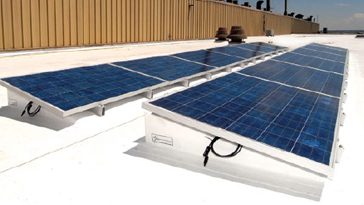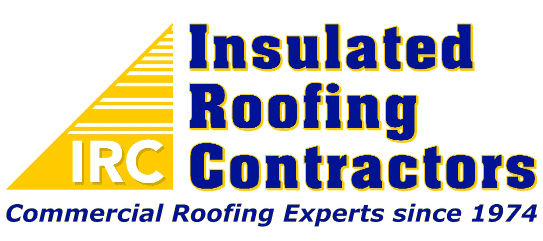IF YOU’RE CONSIDERING A NEW ROOF, READ THIS GUIDE TO ROOFING MATERIALS FIRST
There are many different roofing materials available to you as a building owner, and some are significantly better than others depending on the circumstances. No material is best in every situation, though. Which roofing material is best for your building depends on your current roofing system, your current needs, and your building type, among other factors.
The only way to determine which roofing material is best for your roof is to know the alternatives, weigh the pros and cons of each, and determine which material meets your current needs in the most complete way. After you have analyzed the alternatives, you can then make a decision that is based in research, and that should lead to good roofing material decisions for your building.
We can’t get up on your roof and determine which roofing system would be best for you (unless you schedule a free inspection with us), but we can give you some general guidelines and principles on which you should base your future roofing decisions. Let’s look at the difference in commercial and residential roofing, and then some common types of commercial roofing materials: sprayed polyurethane foam, single ply, coatings, and metal.
Commercial Roofing Materials
 The biggest difference between commercial and residential roofing is the slope of the roof. In general, commercial roofs are low sloped or flat roofs, while residential roof are steep sloped. Technically speaking, any roof with a slope that is 14 degrees or less is a low sloped roof. Compare this to residential roofs, which are typically classified as steep sloped roofs. Any slope greater than 14 degrees is generally going to be a residential roof. Because residential slopes are steeper, they require different materials than commercial roofs. Depending on your roof slope and building use, the materials you need vary greatly.
The biggest difference between commercial and residential roofing is the slope of the roof. In general, commercial roofs are low sloped or flat roofs, while residential roof are steep sloped. Technically speaking, any roof with a slope that is 14 degrees or less is a low sloped roof. Compare this to residential roofs, which are typically classified as steep sloped roofs. Any slope greater than 14 degrees is generally going to be a residential roof. Because residential slopes are steeper, they require different materials than commercial roofs. Depending on your roof slope and building use, the materials you need vary greatly.
Spray Foam Roofing Materials
Spray foam roofing materials are designed mostly for commercial use. While spray foam is often used in residential homes today and is increasing in popularity with each passing year, it is typically only used for insulation purposes in the walls and attic of a residential building. When used on commercial buildings, spray foam roofing materials consist of two components that are spray-applied through sophisticated hoses and spray guns. When the material is sprayed from the gun, the two components mix together, form the spray foam, and expand 20-30 times their original size. This is what allows spray foam roofing materials to fill all the small cracks, holes, joints, and protrusions and create a leak-free system.
Single Ply Roofing Materials
Single ply roofing materials consist of many different materials and systems. They are not one system, but rather a grouping of various roofing materials. Single ply roofing materials are designed to be applied, as you may have guessed, in a single layer. They tend to exhibit great flexibility once adhered, and most single ply materials are extremely resistant to UV radiation. Two main categories exist with regards to single ply roofing materials; they are thermosets and thermoplastics. Single ply roofing materials are typically considered to be easy to install, and inexpensive when compared to most other roofing systems. Common single-ply materials are TPO, PVC, EPDM, and Hypalon. Click the names of each material to learn about them.
Roof Coatings
Another very common category of commercial roofing materials is roof coatings, also referred to as restoration coatings. These coatings are generally spray-applied to an existing roof surface, although they can also be rolled on or even applied with a brush in small areas. Roof coatings are not a standalone roofing system, and are simply a roofing material that is designed to improve the waterproofing aspect of the original roof and extend the life of the roof. They provide excellent protection from the elements, can usually resist ponding water, and can extend the life of a structurally sound roof up to 20 years. Roof coatings aren’t a sufficient roofing system on their own, but when coupled with a roofing material that provides the roof structure, they are a viable option in extending the life of the roof.
Metal Roofing Materials
Metal has been a common commercial roofing material for many years. Metal roofs are extremely durable, long lasting, and provide great protection from the elements. There are several faults with metal roofing materials that have caused them to fall from favor in recent years. These faults are centered on absorbing UV rays, wind uplift issues, and rust setting in and deteriorating the roof surface. These materials must be chosen only in climates that are optimal for the roof, and the roof materials must be thoroughly maintained to avoid rust which often leads to roof failure.
Conclusion
Depending on the environment around your building, your desires for your roof, and the situation you are in, any of these roofing materials may be a good fit for your building. There may be several viable options for your building. By continuing your research and making sure you choose a material that works in your situation, you can prevent loss of time and money due to bad decisions and make sure your building is protected from the elements by your roof. If you have any questions, be sure to contact us.
